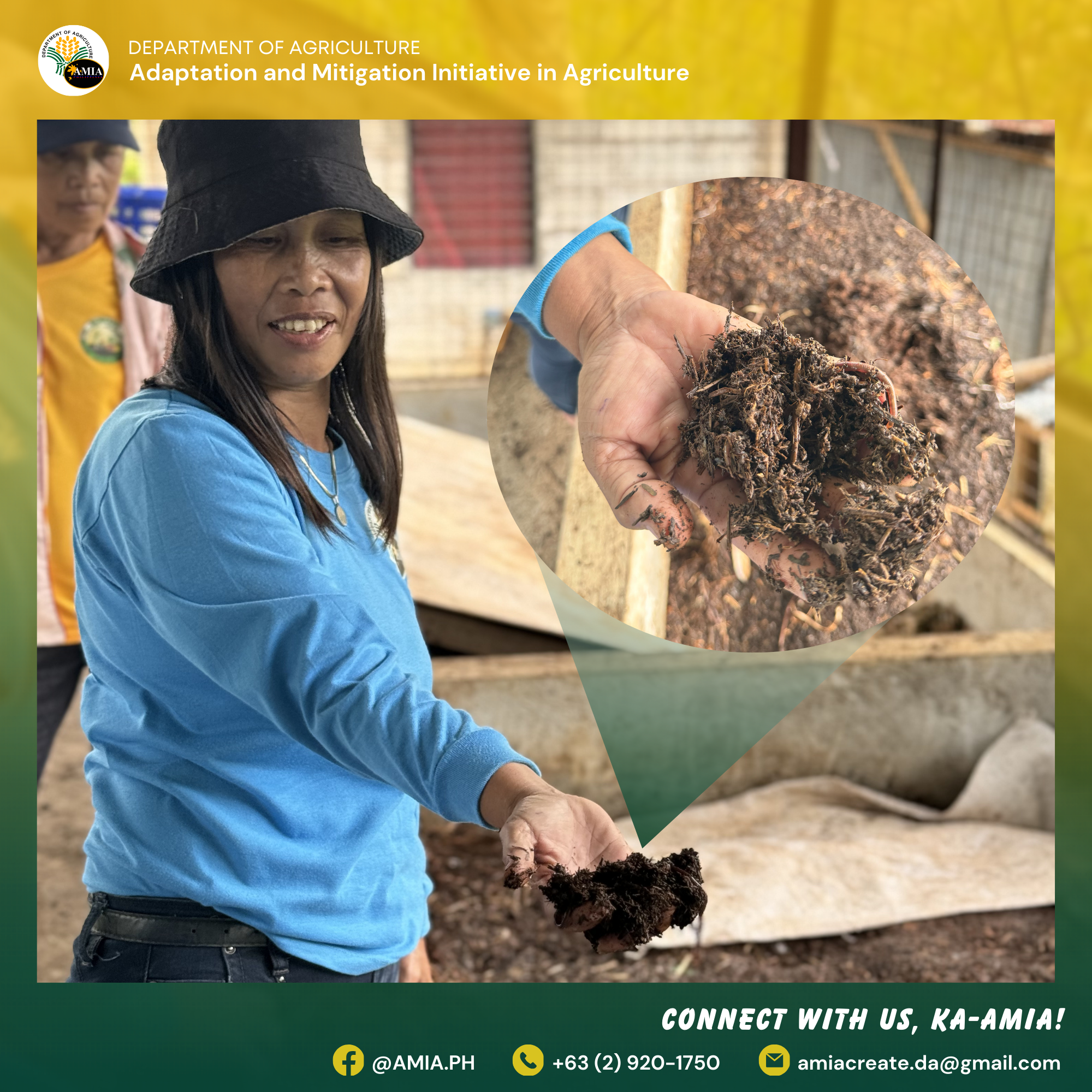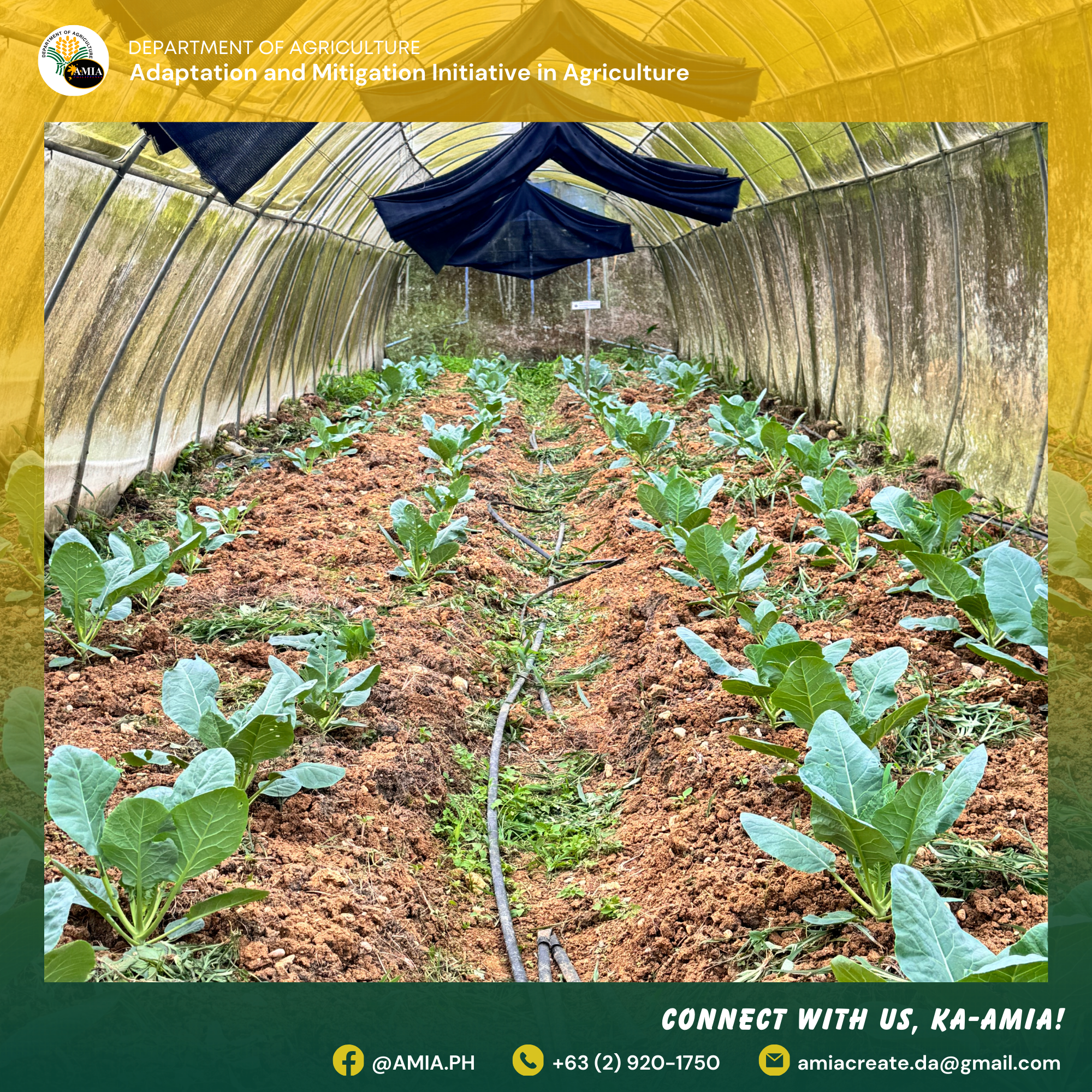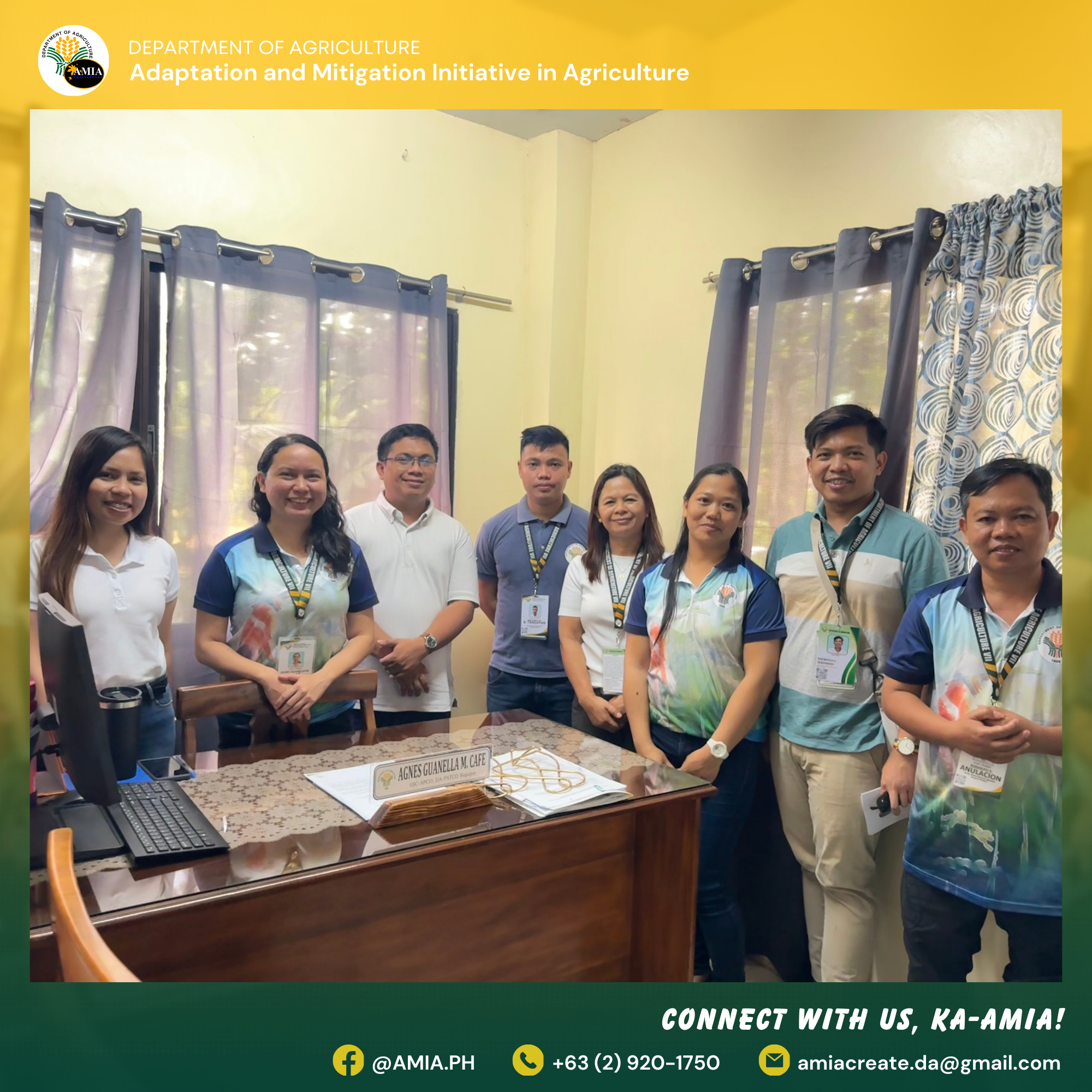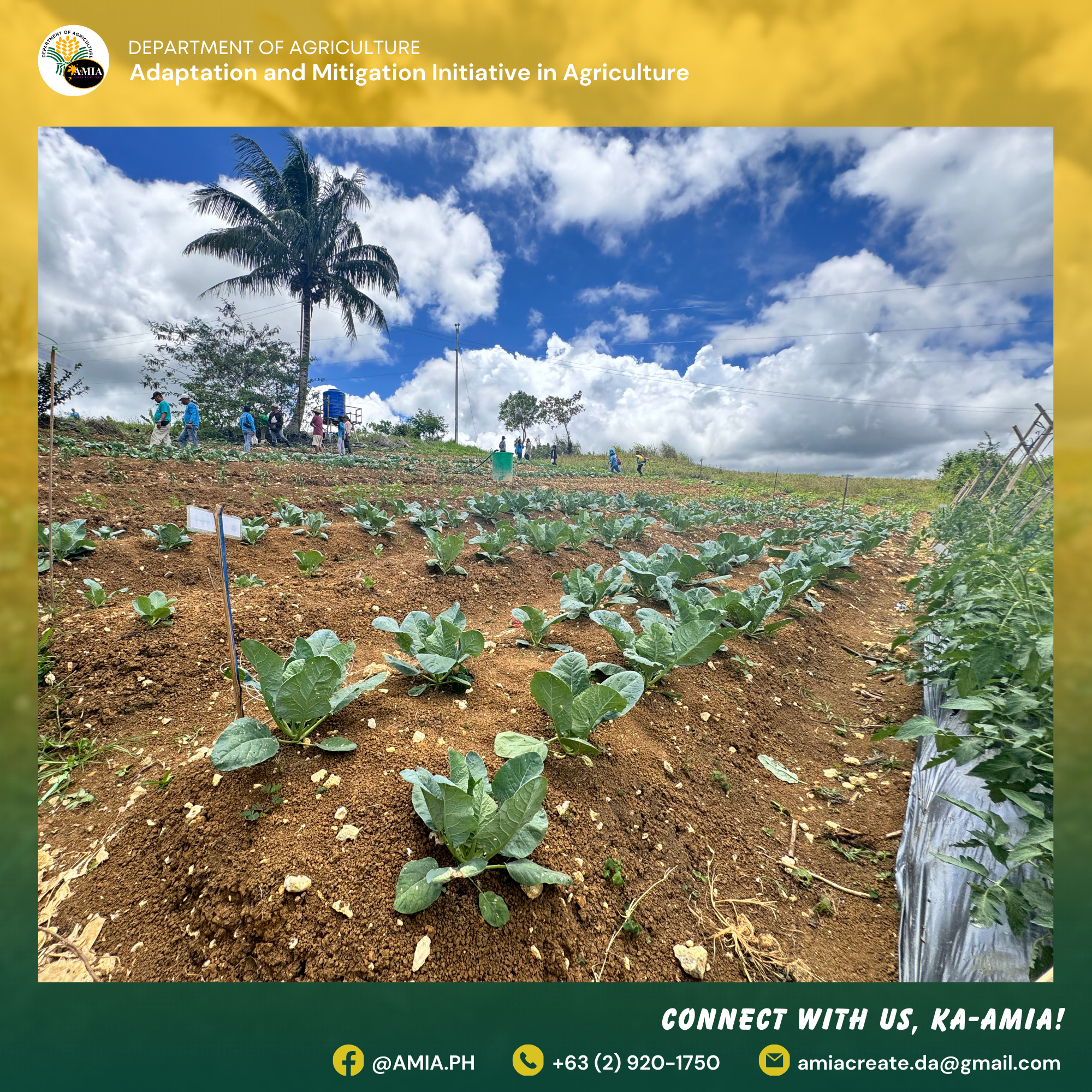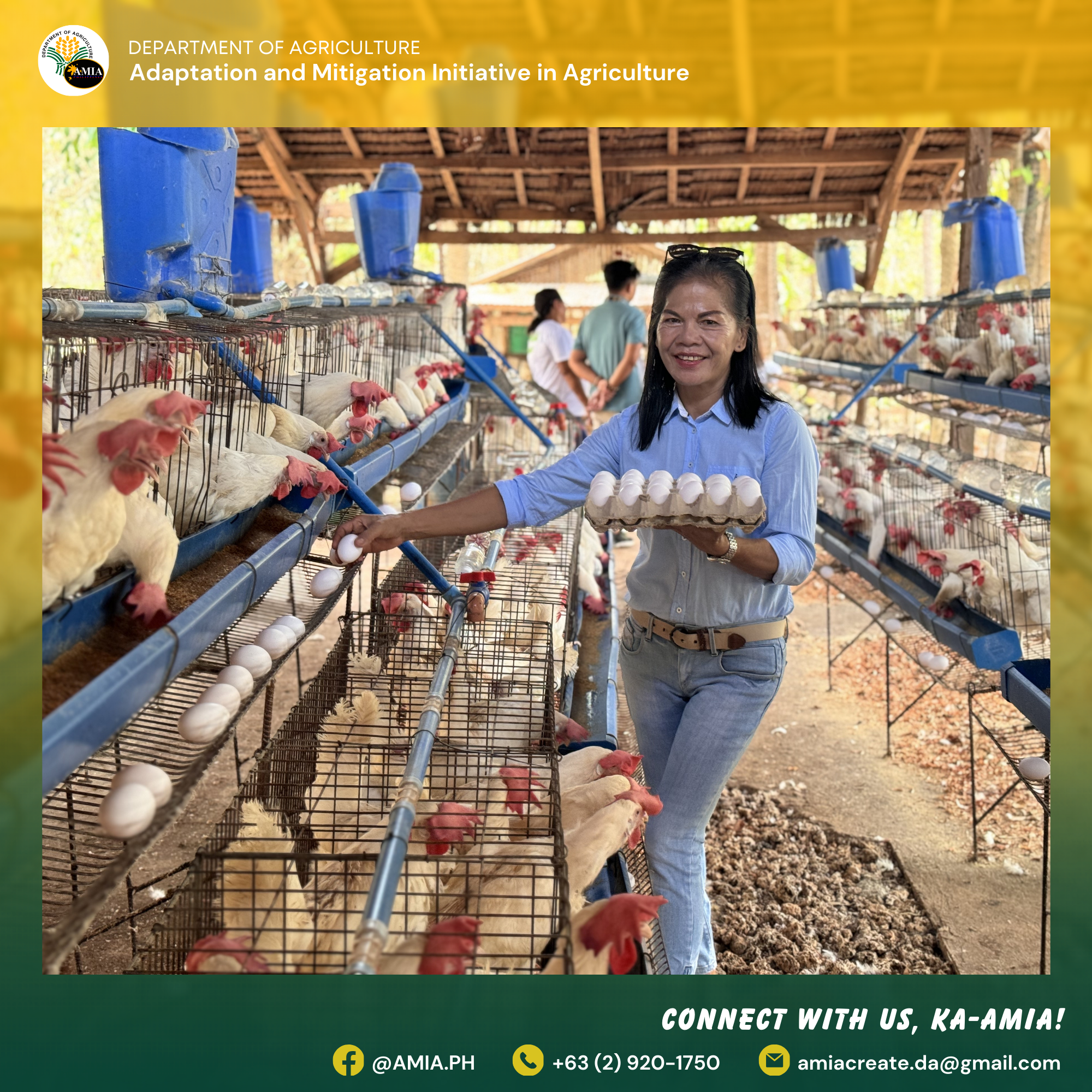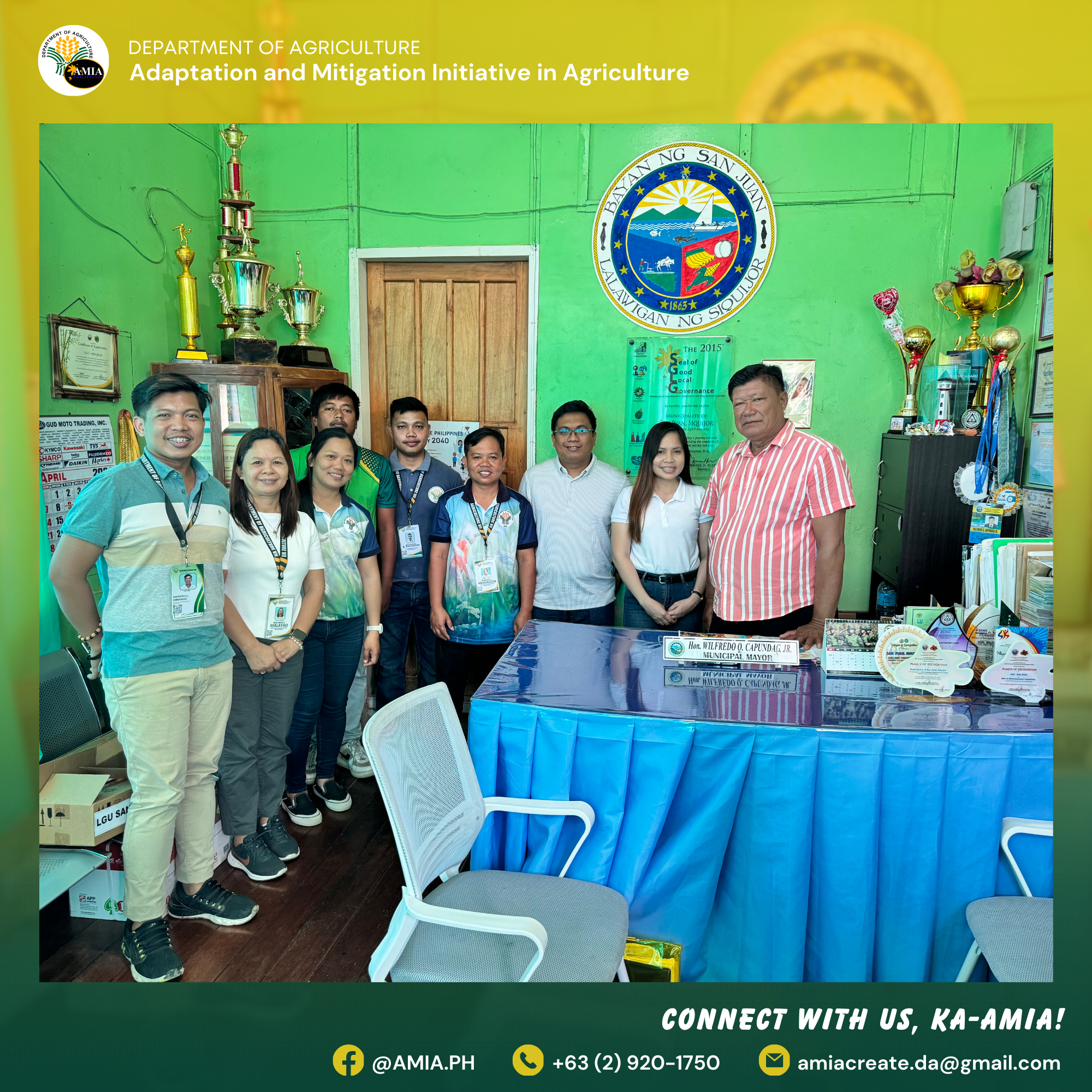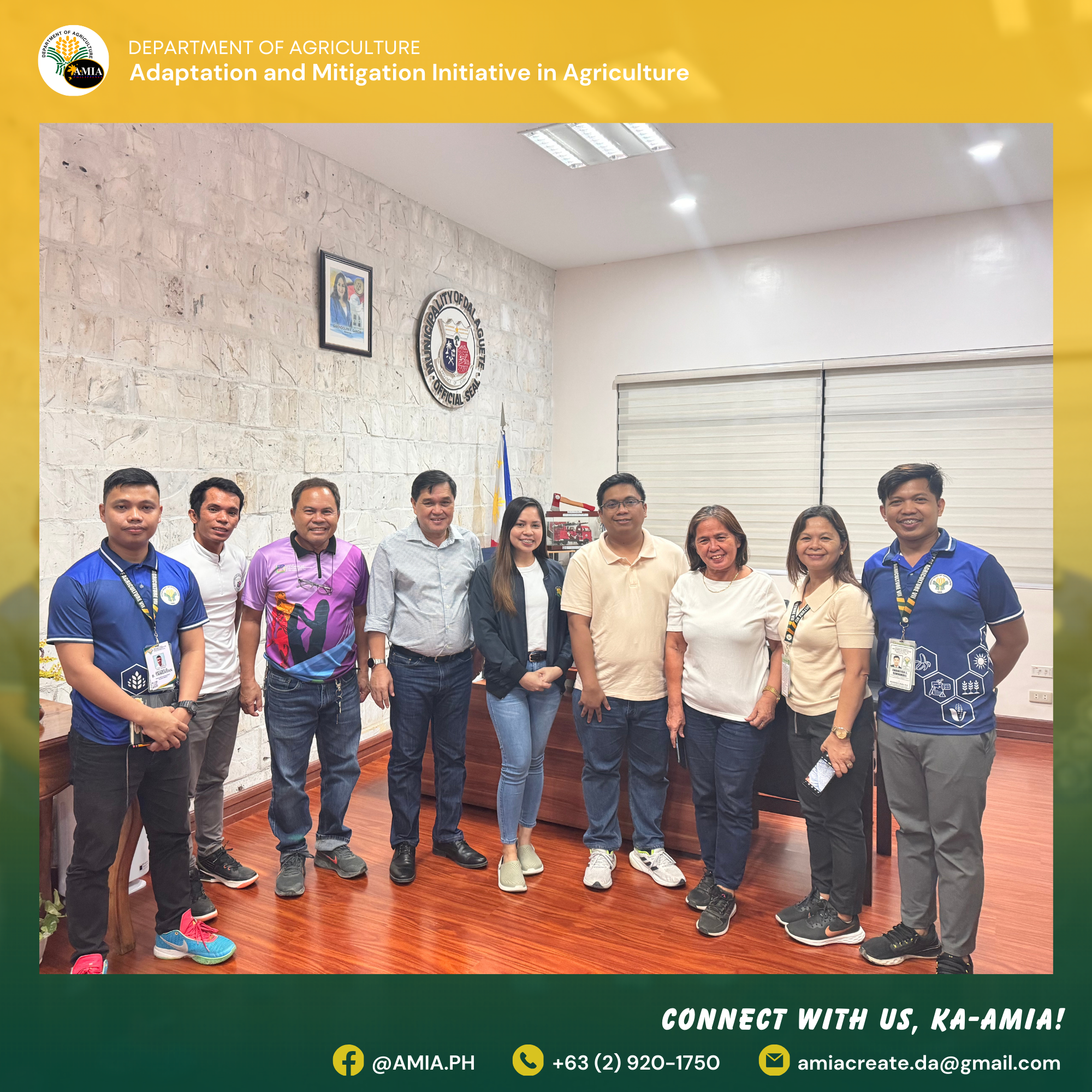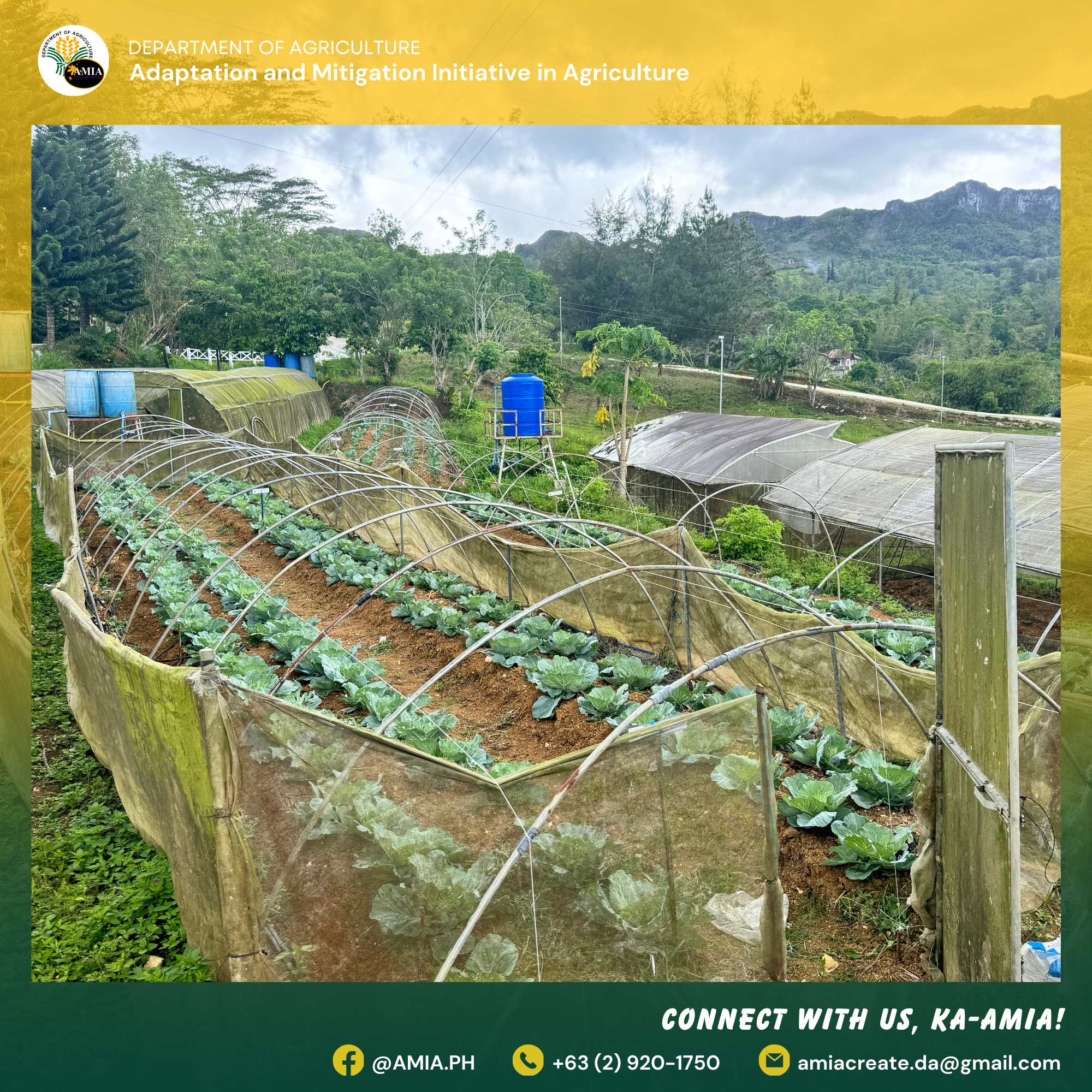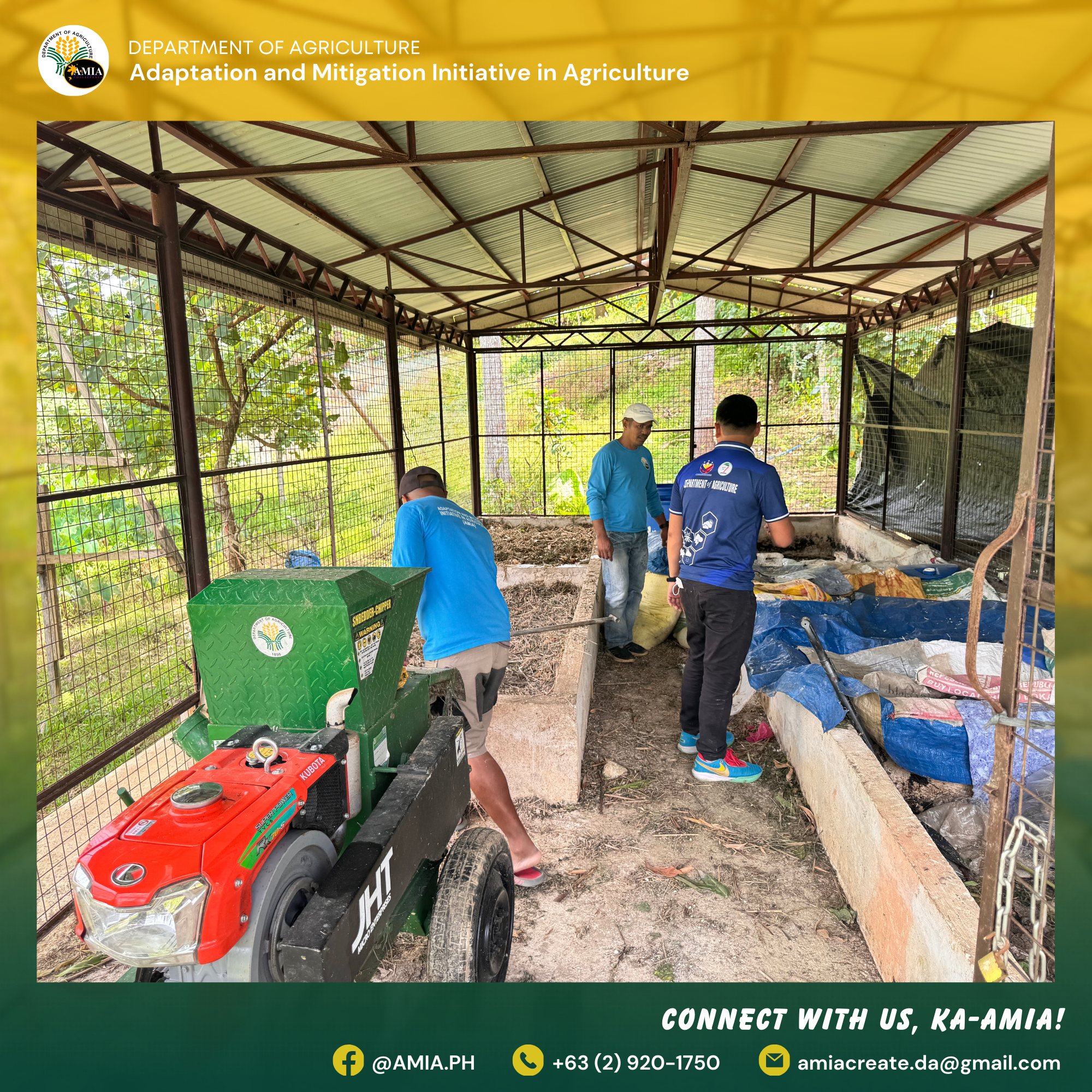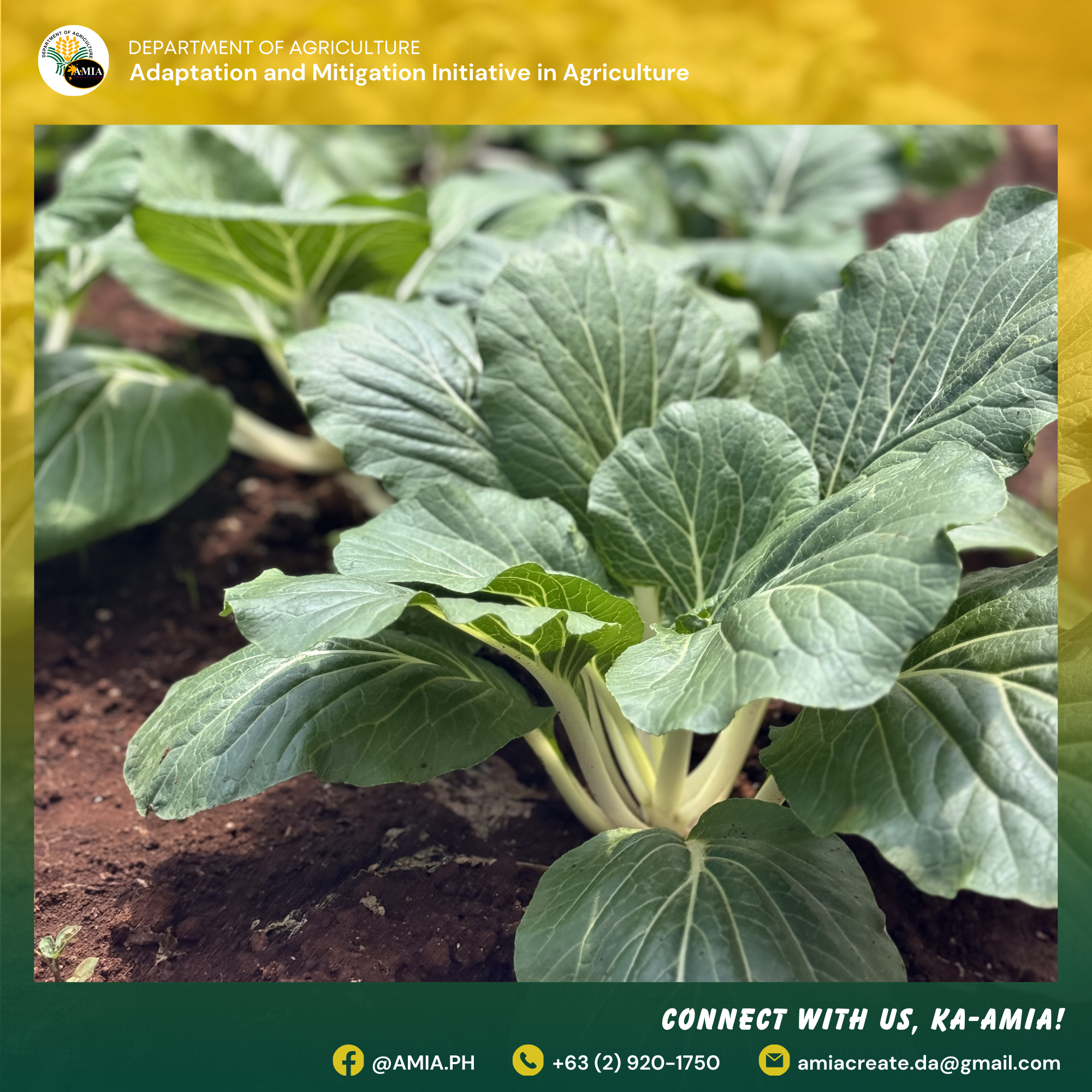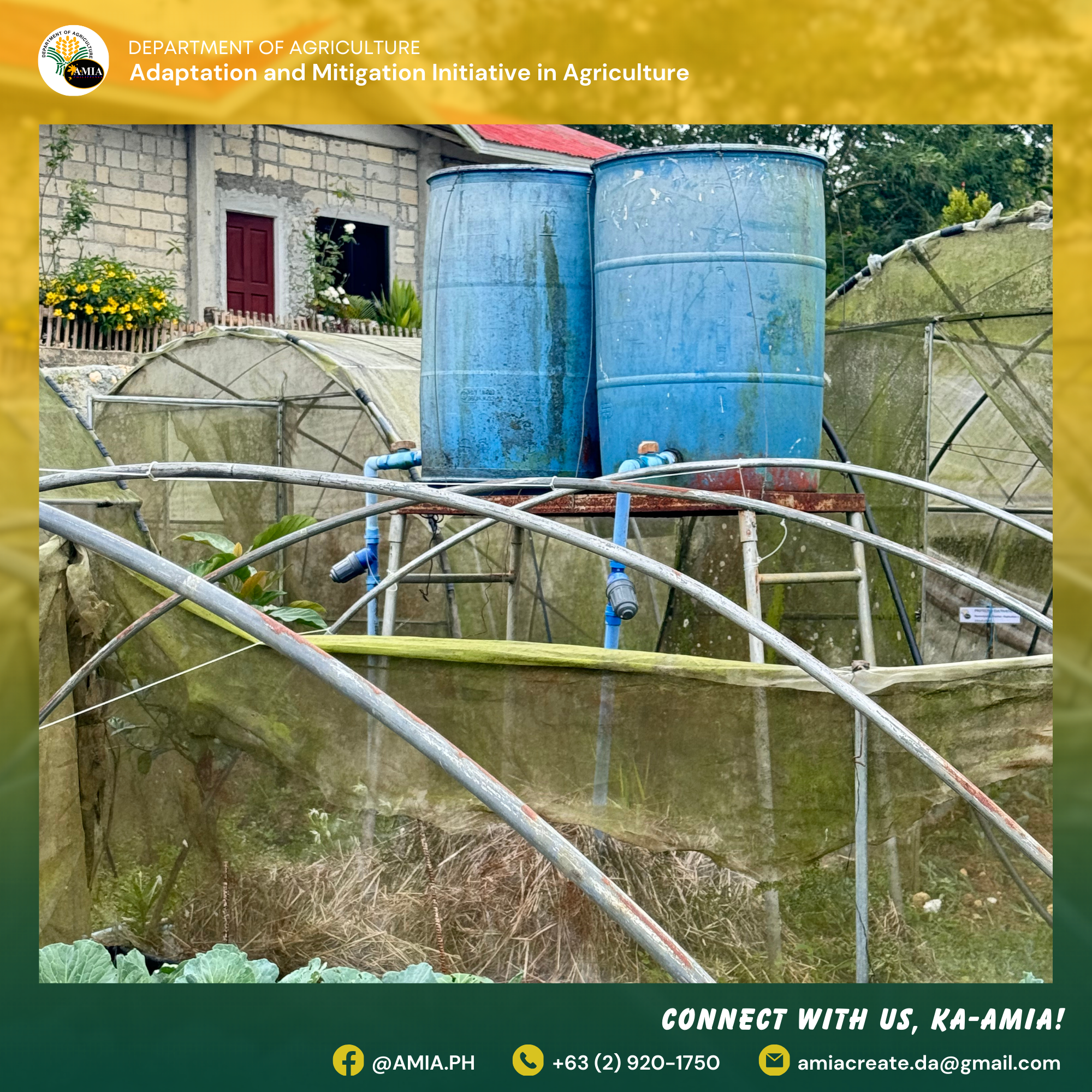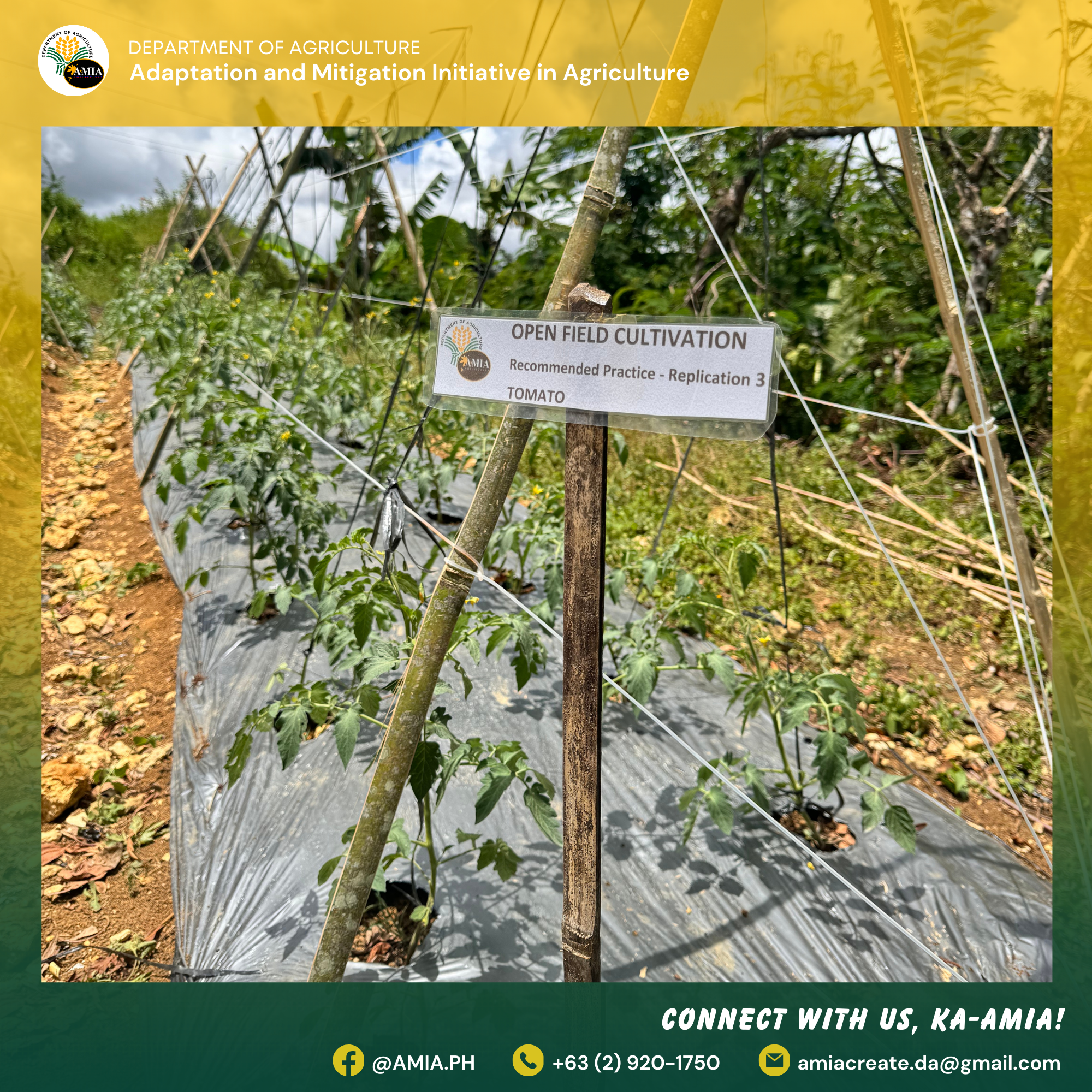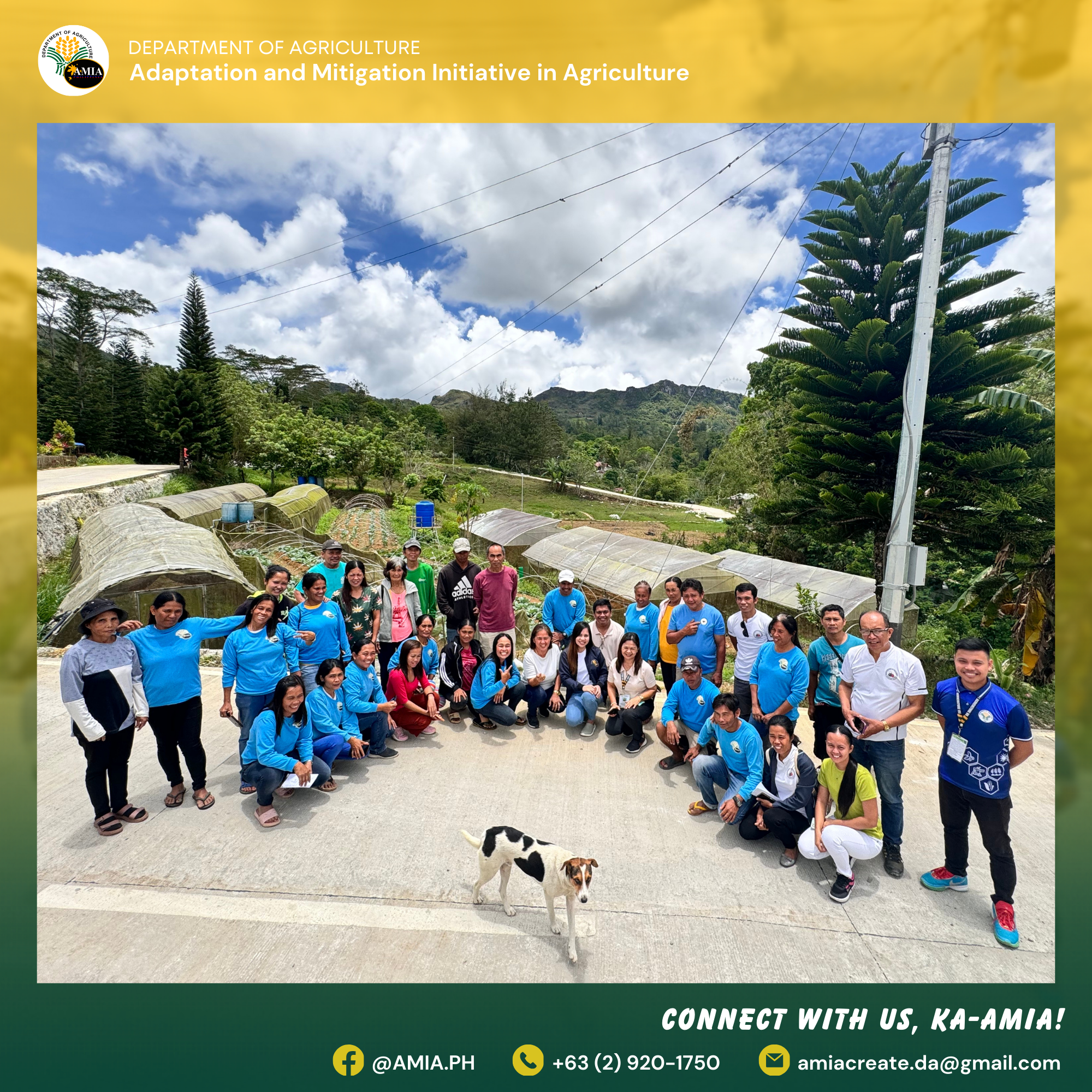
A recent monitoring visit by the Department of Agriculture’s (DA) Climate Resilient Agriculture Office (CRAO) in selected Adaptation and Mitigation Initiative in Agriculture (AMIA) villages in Central Visayas showed the communities’ best practices in climate information services (CIS) and climate resilient agriculture (CRA).
The activity, led by CRAO Planning Officer Rae Michael Barbosa and Project Development Officer Rhoda Faith G. Hurtada-Lee last April 22–26, 2024, included a visit to AMIA Villages in Siquijor and Cebu provinces.
In Cebu, the team visited the 100-hectare AMIA village at Brgy. Mantalongon, Dalaguete, consisting of 229 farmer-beneficiaries. Farmers employ Climate Resilient Agriculture practices like Sloping Agriculture Land Technology (SALT), farm diversification, water harvesting, climate information services, crop-livestock integration, and drip irrigation, among many others, to adapt to their climate hazards, which include landslide, soil erosion, and drought.
To guide farmers in their short-term and long-term farming practices, six units of Farm Weather Outlook and Advisory (FWOA) bulletin boards were installed in various sites: one unit was installed in the Bagsakan Center, while another unit was placed in the communal area of the two AMIA associations, namely Lahug Mantalongon Farmers’ Association (LAMFA) and Grandchina Vegetable Farmers Irrigators Association (GVFIA). Meanwhile, four units were installed in each of the communal areas of the four farmer associations, namely Mantalongon Irrigators Association (MIA), Kapunungan sa mga Mag-uuma sa Sigpit (KAMSI), Mag-uuma sa Mantalongon nga Nagpakabana (MAMANA), and Suwa Mantalongon Farmers’ Association (SUMAFA). The bulletin boards feature weather forecasts from PAGASA with corresponding farm advisories from DA to help farmers plan their daily and seasonal farming activities.
Meanwhile, in Siquijor, the team visited the 87-hectare AMIA Village at Brgy. Tubod, San Juan. Consisting of 50 farmer-beneficiaries, the Tubod Vegetable Growers Association (TVGA) practices diversified farming and promotion of crop and livestock integration to manage their climate risks of drought and flooding. With the support of the AMIA Program, the farmers received upgraded livestock, various farm tools, composting facilities, seeds, and fertilizers, which helped boost their production activities with increased efficiency, building their resilience.
The village, being a Balik-Probinsya, Bagong Pag-asa (BP2) program reintegration site, also received assistance from the BP2 program, including a spring development project and various capacity-building activities.
Throughout both assessments, active community participation and strong collaboration with Local Government Units (LGUs) and other stakeholders were evident. The AMIA farmers’ associations played an important role in driving economic growth and establishing self-sufficiency within their communities.
As the assessments concluded, the DA CRAO outlined key recommendations for the improvement of the villages, emphasizing the importance of market linkages, diversified livelihood opportunities, and strengthened provision of CIS. ###

